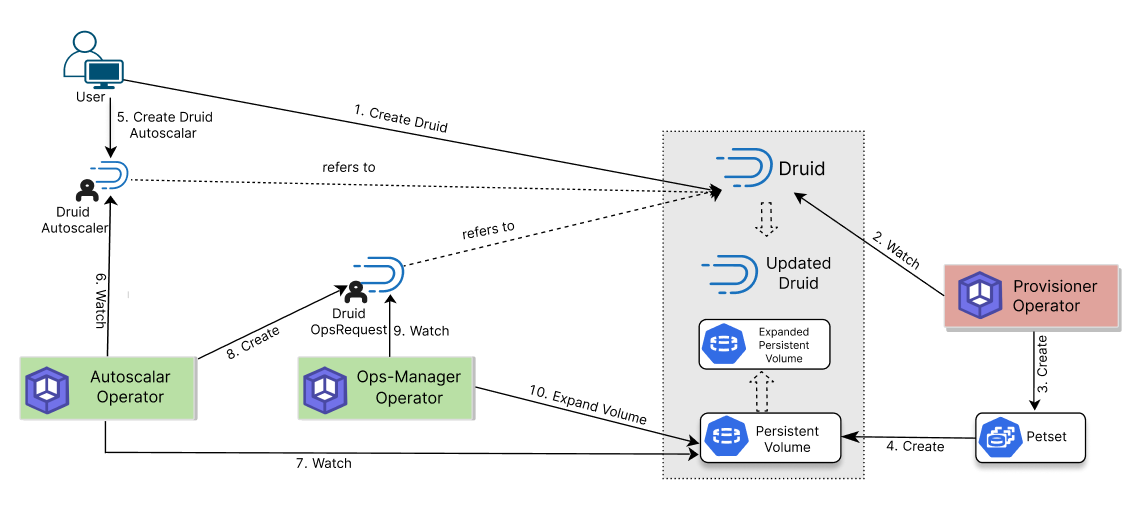You are looking at the documentation of a prior release. To read the documentation of the latest release, please
visit here.
New to KubeDB? Please start here.
Druid Vertical Autoscaling
This guide will give an overview on how KubeDB Autoscaler operator autoscales the database storage using druidautoscaler crd.
Before You Begin
- You should be familiar with the following
KubeDBconcepts:
How Storage Autoscaling Works
The following diagram shows how KubeDB Autoscaler operator autoscales the resources of Druid cluster components. Open the image in a new tab to see the enlarged version.

The Auto Scaling process consists of the following steps:
At first, a user creates a
DruidCustom Resource (CR).KubeDBProvisioner operator watches theDruidCR.When the operator finds a
DruidCR, it creates required number ofPetSetsand related necessary stuff like secrets, services, etc.Each PetSet creates a Persistent Volume according to the Volume Claim Template provided in the petset configuration.
Then, in order to set up storage autoscaling of the druid data nodes (i.e. Historicals, MiddleManagers) of the
Druidcluster, the user creates aDruidAutoscalerCRO with desired configuration.KubeDBAutoscaler operator watches theDruidAutoscalerCRO.KubeDBAutoscaler operator continuously watches persistent volumes of the clusters to check if it exceeds the specified usage threshold. If the usage exceeds the specified usage threshold, thenKubeDBAutoscaler operator creates aDruidOpsRequestto expand the storage of the database.KubeDBOps-manager operator watches theDruidOpsRequestCRO.Then the
KubeDBOps-manager operator will expand the storage of the cluster component as specified on theDruidOpsRequestCRO.
In the next docs, we are going to show a step-by-step guide on Autoscaling storage of various Druid cluster components using DruidAutoscaler CRD.



































